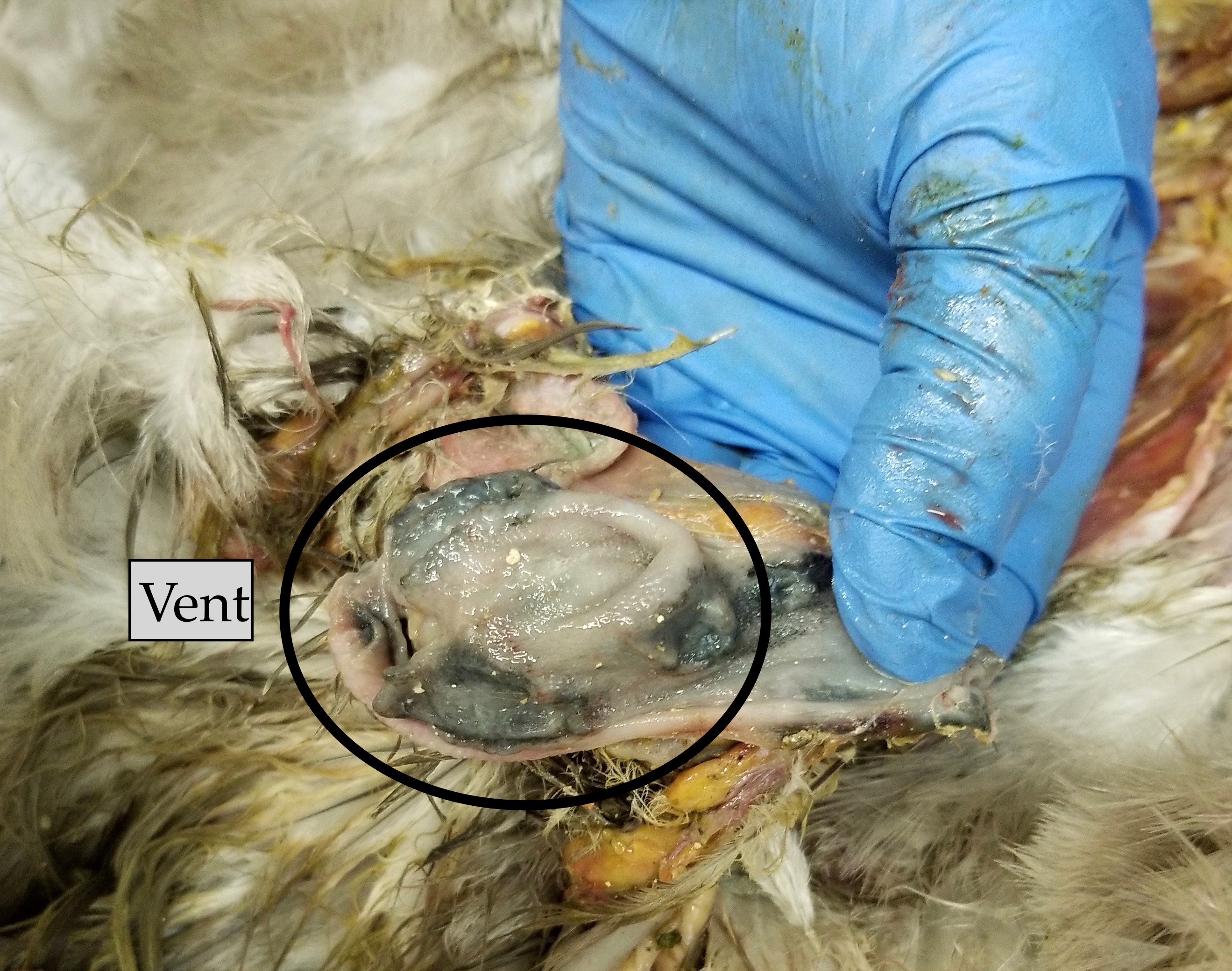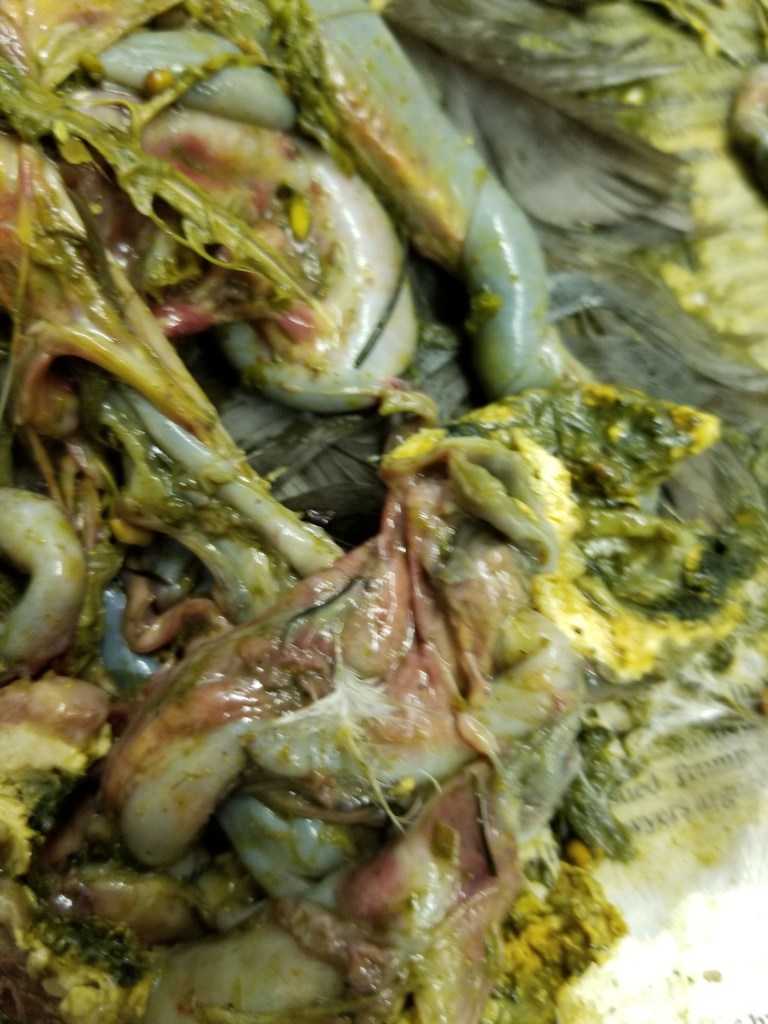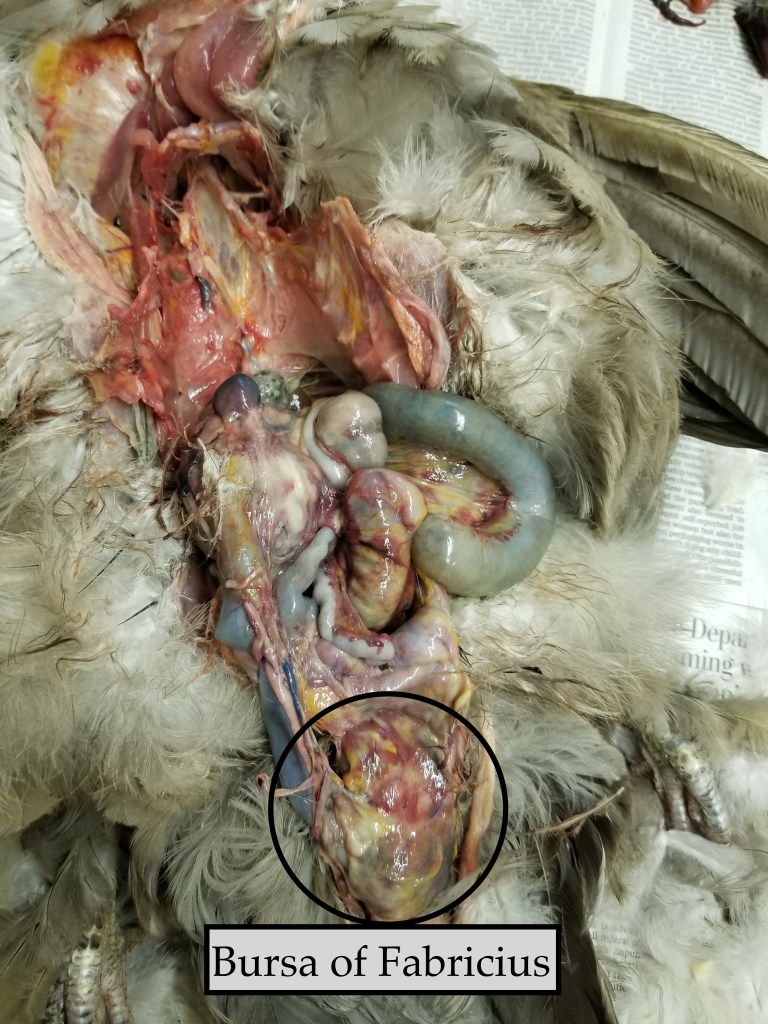Understanding your chickens’ digestive system will help you navigate any problems that might affect it. The crop is located on the right side of the upper chest of the chicken. If it’s firm it’s full. A healthy full crop should be about the size of a plum, full at bedtime and empty in the morning. A full crop at night is a good thing; if it’s still full in the morning that’s cause for concern.
Various crop issues can affect digestion, which can be serious, or even life threatening.
Sour crop: Occurs when the crop empties slowly, allowing food to sit, ferment and develop a yeast infection (candida albicans).
Impacted Crop: An impacted crop will be firm and large like a tennis ball, may be tender to touch and does not empty overnight.
Interpreting DIY necropsy photos are not my forte. I often send them to my online friend, Deb, who is a Veterinary Technician for her opinion. In this case, it’s her hen that died and she’s sending the material to me. Here’s her story:
Blue, Lavender Marans Hen, 3 ½ year old Impacted Crop
“I believe Blue was sick for a while before I realized it. She had stopped laying and became broody, or so I figured because she was hanging out in a nest box beside my broody Cochin hen. She’d never wanted to hatch chicks before so that should have been my first clue something wasn’t right. I gave both of them two eggs to incubate and she turned out to be super mom. I was so proud of her.
Blue showed no signs of illness throughout sitting on the eggs and taking care of the chicks. She and the Cochin hen worked in tandem protecting and watching over them throughout the day. Her routine had been the same for six weeks. Then one evening I saw her sitting, watching the chicks, with her eyes half closed. She didn’t even move away when I got close to her.
I brought Blue into the house and noticed her crop was the size of a softball. I could also feel the swelling in her abdomen close to her vent. I did an internal exam and felt what I thought was a mass.
I cleaned her up, dried her off and expected to take her to the vet the next morning, but she passed away overnight. I think the only thing that kept her going during this time were the chicks.
I necropsied her myself and took photos in an attempt to figure out what happened to her.
Her crop was ridiculously huge and impacted, although she had been eating right up to her last day. I’m not sure if the crop was her primary cause of death. She was a mess when I opened her up so I wasn’t sure what I was looking at. I was taken aback when I saw the condition of her liver. Between not knowing she was sick and not knowing what the heck I was looking at, I was very frustrated. Notice the size of her crop and darkening in the abdomen, which was green in color.”








“The last picture is part of what I removed from her Bursa Of Fabricius: it was almost like salpingitis.”


What is the Bursa of Fabricius?
Chickens make antibodies, which are specific defenses programmed against particular organisms. The immune response is provided by antibodies (T and B lymphocytes) that circulate in the blood to fight foreign invaders like viruses and bacteria. T-cells mature primarily in the thymus, a lymphoid organ. Unique to birds is the Bursa of Fabricius, another lymphoid organ, where the B-cells mature. Destruction of the BF in a young bird (e.g. by Infectious Bursal Disease or Marek’s Disease) prevents the programming of B-cells for the rest of their life.
“I think she had a couple of things going on. Impacted crop for one and something with her Bursa of Fabricius looked off to me. I’m wondering if she had an intestinal blockage due to her swollen Bursa, which could have then led to an impacted crop. My understanding is the Bursa is supposed to shrink with age.
I haven’t found anything about an infection of the Bursa of Fabricius in hens. If you ever come across more information , I’d love to know. I would have thought something like Infectious Bursal Disease Virus (IBDV), but I haven’t found something to confirm it. I should have sent her for a professional necropsy because I came across things I couldn’t decipher.”
Many thanks to Deb Watt for sharing her story and photos, used with permission.

This is such a great blog. Had to deal with soup crop a few times, not easy, but blogs like this help to sort things out without a vet.
LikeLiked by 2 people